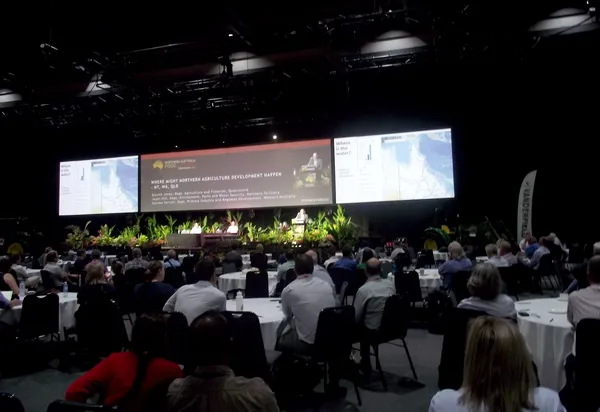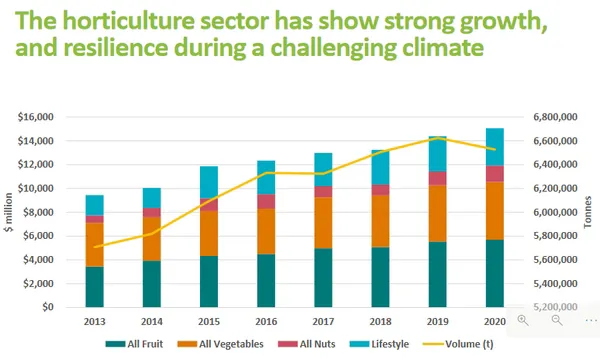Australia's peak horticulture research and development body is expanding its presence in Northern Australia, with the recent introduction of a Regional Extension Manager, to help connect growers in dealing with specific challenges across the region.
Hort Innovation's General Manager of Data & Extension, Dr Anthony Kachenko presented at this week's Northern Australia Food Futures Conference in Darwin, telling delegates that the Northern Australia representative Dr Olive Hood is looking to engage more closely with members of the horticulture industry.
"We want to drive connection to ensure that we hear where future investment should be, make sure that we don't duplicate efforts and think about the broader opportunities in terms of sustainable investment to get robust programs that deal with 'the now' and the future underway," he said.
Regional Extension Managers operate in six horticulture regions, capturing 94 per cent of horticultural activity in Australia, and work with industry and potential future co-investment partners to amplify the outcomes of research and development levy investments.

Photo: The Northern Australia Food Futures Conference in Darwin ran for three days and had over 450 attendees.
He added that Hort Innovation has been collecting data across the industry for many years, and this year launched the sixth edition of the Australian Horticulture Statistics Handbook. Dr Kachenko says the key is bringing that data and research together in a meaningful way to help growers and industry stakeholders grow the country's northern regions.
"We have reams of pest and disease management resources, and a strong investment program in the biosecurity space, which is a consistent priority for all horticulture sectors," Dr Kachenko said. "How do we bring that to life to shape growth? The Hort Stats handbook has become the bible for providing intelligence around the current state of the industry. Every year it has grown bigger and this year has included the foodservice sector. It has consistently included the export sector and provides the value of production which has grown year on year. We are seeing that this resource is being used to drive policy and present due consideration of the growth that the industry has endured and where it is heading. We see that as a foundational input to shape any of the conversations about policy, investment and how do we shape the north."
Dr Kachenko mentions that there are several unique considerations for the north, from a grower level and getting access to land, water and the logistics of operating the business commercially, right through to industry level issues such as biosecurity and pest incursions.
"Part of our programme is to provide new chemistries, resources, tools and support to deal with pest incursions, as well as historical research around that pest," he said. "Our regional extension team has recently got an investment up and running here in the north looking at how we bring the knowledge to the industry to deal with Fall Armyworm, which has provided significant problems up here for growers. There are some great initiatives that we will be involved in that will unlock the north and make sure it is done bearing in mind all the risks and challenges as well."
Climate change is a further consideration, according to Dr Kachenko, who says decisions cannot be taken lightly when expanding or planting new crops. He says it is easier when it is just transitioning an annual crop, but planting a whole new orchard requires greater consideration to reflect proposed long term changes to weather patterns.

Meanwhile, the new export facility near Darwin airport is also expected to unlock plenty of potential across the Northern Territory's horticulture sector, due to its proximity to Asia.
"For horticulture to reach its $20 billion target by 2030, as part of the (whole of agriculture sector's) $100 billion target, we have to continue to grow domestically, but also in terms of export," Dr Kachenko said. "We have seen year on year growth with export industries, and we expect that to continue. Australia grows more than it consumes, so we need to find and maintain profitable markets. We are close to the north (hemisphere) and that provides significant potential - provided we have the logistics and supply chain considerations bedded down here and we are moving in the right direction. But we need to make sure the right markets open up, and we are working to prioritise what markets we need to open up quicker, and what are the biosecurity considerations that need to be factored in."
For more information
Anthony Kachenko
Hort Innovation
Phone: +61 2 8295 2300
info@horticulture.com.au
www.horticulture.com.au
